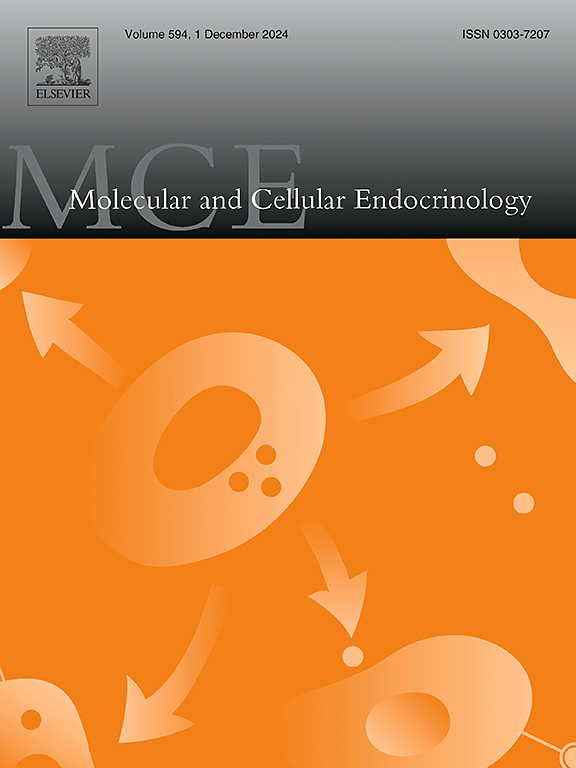ox - ldl刺激的巨噬细胞来源的外泌体调节脂肪组织重塑,促进动脉粥样硬化的进展。
IF 3.6
3区 医学
Q2 CELL BIOLOGY
引用次数: 0
摘要
背景:动脉粥样硬化(AS)是一种慢性血管疾病,血管周围脂肪组织功能障碍是动脉斑块形成的重要原因。然而,其潜在机制尚未完全阐明。本研究的目的是探讨氧化低密度脂蛋白(ox-LDL)刺激巨噬细胞来源的外泌体在AS发展中的机制。方法:从ox- ldl处理的巨噬细胞中分离外泌体,并将其注射到西方饮食喂养的ApoE-/-小鼠体内。我们通过组织学、ELISA、qPCR和western blotting评估AS、脂质代谢和内皮功能,并检测BMP7和OPA1在棕色脂肪和血管内皮中的调节。结果:提取巨噬细胞来源的外泌体,透射电镜测定其大小。此外,检测巨噬细胞中CD9、CD63和TSG101蛋白的表达。与对照组相比,外泌体组AP2和PPAR表达升高,UCP-1、PGC-1α和BMP7表达降低。此外,当BMP7被敲除时,脂质代谢物FASN、SCD1、HSL和ATGL以及OPA1的表达降低。在ApoE-/-小鼠模型中,与对照组相比,外泌体组动脉斑块和斑块病变形成增加,脂质指标TC、TG、LDL-C和HDL-C表达升高,促炎因子VCAM1、ICAM1、MCP-1和IL-6表达显著增加。因此,该组AS的进展加重。结论:本研究表明ox-LDL刺激巨噬细胞外泌体分泌,加速AS过程。BMP7在机制上调控OPA1的表达,影响正常脂质代谢,从而加速AS的发生。本文章由计算机程序翻译,如有差异,请以英文原文为准。
Ox-LDL-stimulated macrophage-derived exosomes regulate adipose tissue remodeling and promote the progression of atherosclerosis
Background
Atherosclerosis (AS) is a chronic vascular disease, and perivascular adipose tissue dysfunction is an important cause of the arterial plaque formation involved. However, the underlying mechanism has not been fully elucidated. The aim of this study was to investigate the mechanism of oxidized low-density lipoprotein (ox-LDL) stimulation of macrophage-derived exosomes in the development of AS.
Methods
We isolated exosomes from ox-LDL-treated macrophages and injected them into Western diet-fed ApoE−/− mice. We assessed AS, lipid metabolism, and endothelial function by histology, ELISA, qPCR, and western blotting, and examined BMP7 and OPA1 regulation in brown fat and vascular endothelium.
Results
Macrophage-derived exosomes were extracted, and their size was determined by transmission electron microscopy. Additionally, CD9, CD63, and TSG101 protein expression within these macrophages was determined. Compared with the control group, the exosomes group showed increased expression of AP2 and PPAR and decreased expression of UCP-1, PGC-1α, and BMP7. Furthermore, when BMP7 was knocked down, the expression of the lipid metabolites FASN, SCD1, HSL, and ATGL as well as of OPA1 decreased. In an ApoE−/− mouse model, compared to the control group, increased arterial plaques and plaque lesion formation were observed in the exosome group, along with elevated expression of the lipid metrics TC, TG, LDL-C, and HDL-C and significant increases in the expression of the proinflammatory factors VCAM1, ICAM1, MCP-1, and IL-6. Consequently the progression of AS was aggravated in this group.
Conclusions
This study demonstrated that ox-LDL stimulated exosome secretion from macrophages, accelerating the AS process. It also showed that, mechanistically, BMP7 regulates the expression of OPA1 and affects the normal lipid metabolism, thereby accelerating AS.
求助全文
通过发布文献求助,成功后即可免费获取论文全文。
去求助
来源期刊

Molecular and Cellular Endocrinology
医学-内分泌学与代谢
CiteScore
9.00
自引率
2.40%
发文量
174
审稿时长
42 days
期刊介绍:
Molecular and Cellular Endocrinology was established in 1974 to meet the demand for integrated publication on all aspects related to the genetic and biochemical effects, synthesis and secretions of extracellular signals (hormones, neurotransmitters, etc.) and to the understanding of cellular regulatory mechanisms involved in hormonal control.
 求助内容:
求助内容: 应助结果提醒方式:
应助结果提醒方式:


